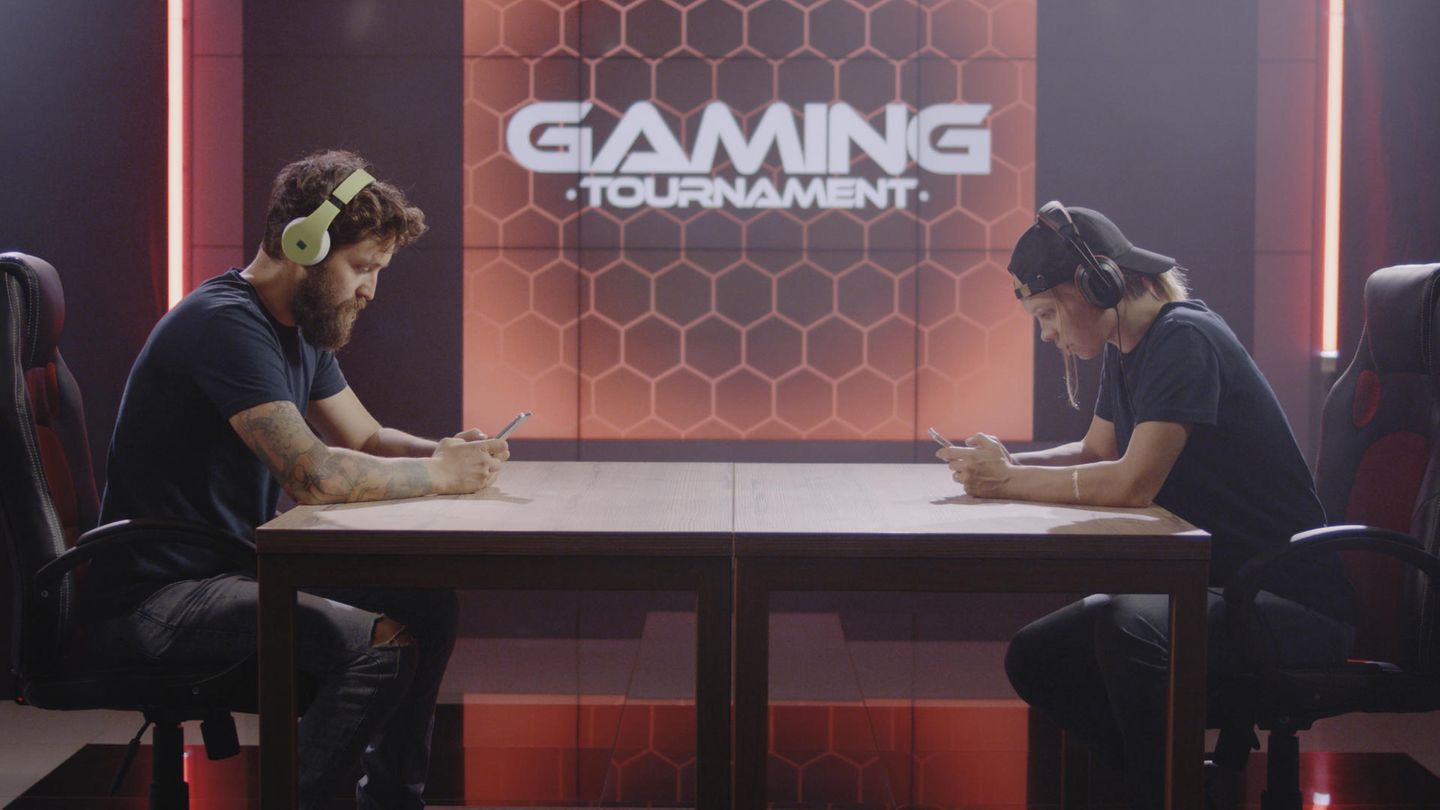Without a powerful gaming cell phone, gamblers in “PUBG”, “Fortnite” and “Call of Duty” quickly look old. But what does a good smartphone need to be able to play games so that gamers have an advantage over their opponents?
Between November 2021 and January 2022, professional gamers will play six million US dollars (around 5.07 million euros) in prize money among themselves at the “PUBG Mobile Global Championship 2021”. By way of comparison: in 2020 there was still two million US dollars in the prize pool (around 1.69 million euros). The growth proves two things: firstly, mobile games for smartphones and tablets have finally arrived in esports, and secondly, the number of players and their fans is growing steadily.
In 2020, the smartphone even supplanted the good old game console as the preferred gaming tool. According to the Game Association, 22.6 million people in Germany used their smartphones to gamble with them in 2020 – 17.2 million players on the console. And as it is in the gaming scene, players with good hardware definitely have an advantage over those who gamble on rather lame bones.
A gaming phone has to be able to do that
In mobile gaming, the hardware is even more important than on the PC or console. The main focus of gamers’ attention must be on the refresh rate of the smartphone display. It decides how many images a player sees per second (frames per second, FPS for short). In order to achieve this refresh rate when gaming, the processor of the smartphone must have enough power. Why is that important?
On the one hand, the game animations flicker more smoothly across the display at high frame rates. And that can be an advantage, for example in situations where players go around virtual corners. If the opponent plays with a frame rate of 30 frames per second and walks around a corner, players with a high frame rate see the movement more smoothly and therefore milliseconds earlier than the gamer with a lower frame rate. In addition, a low refresh rate can lead to a loss of information. Under certain circumstances, gamblers can see their opponents later with fewer frames per second. Vividly shown from minute 1:13 in this video:
In some titles such as “PUBG Mobile”, the recoil behavior of the weapons changes with the refresh rate. Means: The higher the refresh rate of the gaming phone, the more precisely gamers hit their opponents. This is an extreme advantage, especially in heated situations in which gamers tend to be constantly on fire. As if that weren’t enough, a high frame rate in “PUBG Mobile” also improves the firing speed of the guns. The more images are displayed per second, the faster the weapon will fire. This fact cannot be wanted by the developers. However, competitive players cannot change the software and should therefore use one of the following gaming mobile phones.
1. Asus Zenfone 8
- Processor: Snapdragon 888, Adreno 660 Graphics
- Random access memory: 8 GB
- Storage: 128 GB
- Display: 5.9 inches (15 cm), 2.400 x 1.080 Pixel, 120 Hz
- Particularities: 5G, IP 68
Most PC gamers will be familiar with Asus because of its graphics cards and mainboards. The manufacturer is also involved in the smartphone market, including with its own . With its 5.9 inch screen diagonal, it is one of the smaller gaming smartphones on the market. But with the Snapdragon 888 from Qualcomm, one of the most powerful smartphone processors is under the hood. Asus skims a bit when it comes to working memory. The manufacturer only installs 8 gigabytes in its Zenfone 8. But it doesn’t matter, because that’s easily enough for gaming. The screen offers a maximum of 120 Hertz.
2. Asus Rog Phone 5
- Processor: Snapdragon 888, Adreno 660 Graphics
- Random access memory: 16 GB
- Storage: 256 GB
- Display: 6.78 inches (17.22 cm), 2,400 x 1,080 pixels, 144 Hz
- Particularities: ROG HyperCharge for fast charging
Real hardcore gamers still prefer to take it from Asus. This offers the same processor but twice as much system and RAM. This means that gamers are well equipped for the future. The display is also slightly larger at 6.78 inches with the same resolution, which should flatter larger hands. Its refresh rate of 144 Hertz is, however, 24 frames per second above the Zenfone 8. And the Rog Phone 5 offers a practical fast charging mode.
3. ZTE Nubia RedMagic 6
- Processor: Snapdragon 888, Adreno 660 Graphics
- Random access memory: 12 GB
- Storage: 128 GB
- Display: 6.8 inches (17.23 cm), 2280 x 1080 pixels, 144 Hz
- Particularities: Cooling system
Incredible but true: that has integrated active liquid cooling. PC gamers actually only know such cooling solutions from desktop computers. So the smartphone is cool in the hand even on warm days. With 12 gigabytes of RAM and the Snapdragon 888 processor, the RedMagic 6 doesn’t have to hide from the competition. The same applies to the 144 Hertz display with a screen diagonal of 6.8 inches. The RedMagic 6 makes two shoulder buttons that console gamers know from controllers. Only very few smartphones have such buttons and they are a real advantage for gamers who have problems using a touch screen.
4. Xiaomi Black Shark 4
- Processor: Snapdragon 870, Adreno 650 Graphics
- Random access memory: 8 GB
- Storage: 128 GB
- Display: 6.67 inches (16.94 cm), 2400 x 1080 pixels, 144 Hz
- Particularities: Display with 720 Hz sampling rate, shoulder buttons
Xiaomi also throws its hat into the ring of gaming phones. As usual for the manufacturer, be convinced with a solid price-performance ratio. However, the built-in hardware is not quite as powerful as that of the previous smartphones. The Snapdragon 870 processor still has enough power for most games, although gamers may want to reduce the level of detail in games a bit. Otherwise, the 6.67 inch display offers a refresh rate of 144 Hertz and the Black Shark 4 also has shoulder buttons for anyone who has problems with the control on the touch display.
5. Samsung Galaxy S21 Plus
- Processor: Samsung Exynos 2100
- Random access memory: 8 GB
- Storage: 128 GB
- Display: 6.7 inches (17 cm), 2400 x 1080 pixels, 120 Hz
- Particularities: Video recording in 8K at 24 frames per second
This is not a gaming smartphone in the true sense of the word . Thanks to its powerful Samsung Exynos 2100 processor and 120 Hertz display, it still deserves a place in the ranks of gaming smartphones. Unfortunately, the Galaxy S21 Plus cannot use shoulder buttons and the 8 gigabytes of RAM might not be enough for one or the other player for the price. The Samsung Galaxy S21 Plus is therefore more for casual gamers who appreciate a high-performance smartphone in everyday life.
6. Samsung Galaxy S21 Ultra
- Processor: Samsung Exynos 2100
- Random access memory: 12 GB with 128 and 256 GB internal storage, 16 GB with 512 GB internal storage
- Storage: 128, 256 or 512 GB
- Display: 6.8 inches (17.30 cm), 3200 x 1440 pixels, 120 Hz
- Particularities: Video recording in 8K at 24 frames per second
It’s a size bigger . As with the S21 Plus, the smartphone is not a gaming phone in the classic sense. The S21 Ultra is a little more attractive for gamers than its little brother because it offers 12 or 16 gigabytes of RAM. However, the 16 gigabytes are withheld from the version with 512 gigabytes of internal memory. Samsung smartphones are similar when it comes to the processor. However, the display of the S21 Ultra is larger and has a slightly sharper resolution. Not necessarily an advantage when gaming, because more pixels always crave more performance. Nevertheless, the Galaxy S21 Ultra is a veritable gaming smartphone.
7. Oppo Find X3 Pro
- Processor: Snapdragon 888, Adreno 660 Graphics
- Random access memory: 12 GB
- Storage: 256 GB
- Display: 6.7 inches (17 cm), 3216 x 1440 pixels, 120 Hz
- Particularities: Quadruple camera with 50 megapixel main sensor
With a particularly high display resolution, that is also waiting for you on. As in most gaming phones, the eight cores of the powerful Snapdragon 888 processor in the Find X3 Pro do their job. And they have a lot to do if they are to get the 3216 x 1440 pixels of the 6.7 inch display in “Call of Duty Mobile” or “Fortnite” going. Here, gamers could again tend to the somewhat lower level of detail, after all, the 120 Hertz of the display has to be filled for the processor. Incidentally, he has 12 gigabytes of RAM available for this, which should be enough for the next few years. The same applies to the 256 gigabytes of internal memory that can hold most games.
8. OnePlus 9 Pro
- Processor: Snapdragon 888, Adreno 660 Graphics
- Random access memory: 8 GB
- Storage: 128 GB
- Display: 6.7 inches (17 cm), 3216 x 1440 pixels, 120 Hz
- Particularities: 8K-Video
Same processor but less memory (RAM) compared to the Oppo Find X3 Pro . Unfortunately, OnePlus only gives its top smartphone 8 gigabytes of RAM. In comparison, the system memory of 128 gigabytes has shrunk by half. Space could quickly become tight if gamers shoot 8K videos at the same time, which is actually possible with the built-in camera. Nevertheless, the OnePlus 9 Pro is considered a gaming phone because the 6.7-inch display works at 120 Hertz.
9. OnePlus 9
- Processor: Snapdragon 865, Adreno 650 Graphics
- Random access memory: 8 GB
- Storage: 128 GB
- Display: 6.55 inches, 2400 x 1080 pixels, (16.6 cm), 120 Hz
- Particularities: Hasselblad Camera
It is a size smaller and less powerful . In the ranks of gaming smartphones, its Snapdragon 865 processor is the weakest chip. Otherwise, there is not much to say about the OnePlus 9: Its display has a resolution of 2400 x 1080 pixels, a bit lower than that of the OnePlus 9 Pro. At 6.55 inches, it is also a spark smaller. Thanks to its 120 Hertz, it still makes players happy.
10. iPhone als Gaming-Smartphone?
An iPhone is only partially suitable as a gaming smartphone. Apple has also failed to install at least one display with 120 Hertz in its top models. To make matters worse, the tech giant from California caused displeasure among Fortnite players because it banned the popular Battle Royal game from its app store. The reason for this were quarrels between Apple and the developers about the in-game purchases. Those who are not deterred by the lower refresh rates and Apple’s idiosyncrasy will find otherwise solid gaming phones in iPhones because the processors are among the fastest on the market. But that’s not enough for a recommendation as a gaming smartphone.
David William is a talented author who has made a name for himself in the world of writing. He is a professional author who writes on a wide range of topics, from general interest to opinion news. David is currently working as a writer at 24 hours worlds where he brings his unique perspective and in-depth research to his articles, making them both informative and engaging.




